The cult of saints, live and in person
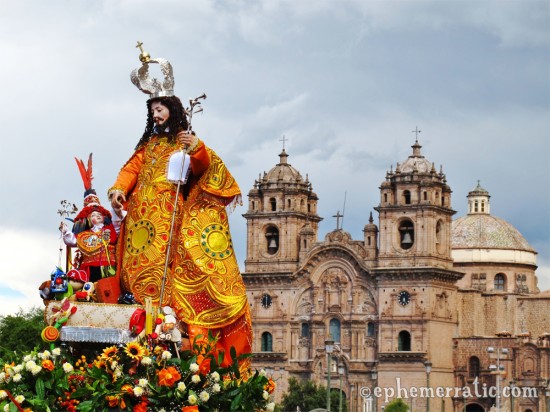
Saint Joseph and the baby Jesus statues carried by Iglesia de la Compañía de Jesús
Back in a college class about early religion, I read The Cult of the Saints: Its Rise and Function in Latin Christianity by Peter Brown.
Stay with me here…
What I recall most from the book, grossly oversimplified, is the relationship of modern Christian ceremonies in Latin America to the indigenous rituals that preceded them. How ritualistic circumambulations of a town to invoke spiritual protection were absorbed by early Christians trying to convert the locals. These indigenous rites morphed into the processions of statues of saints that are still common throughout Latin American countries. It’s one of the few books from college that I’ve held on to. I should probably reread it so I can stop oversimplifying.
It’s no surprise to me then, when Todd and I cross paths with a procession for Saint Joseph’s Day in Cusco, Peru, we see an abundance of Andean culture and even a few bits of the contemporary world integrated into the festival.
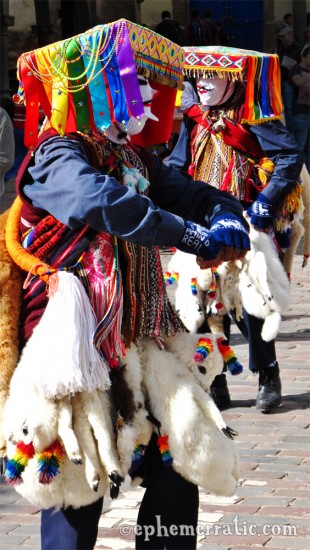
Cápac Colla dancers in the Saint Joseph’s Day procession
Cápac Colla dancers bring the Andean, representing merchants that have made their way down from the mountains to trade.
The men wear snug white knitted masks and accessories in the rainbow colors of the Quechua flag. Baby llamas hang off their belts and backs like hunting prizes (don’t fret, they’re dolls).
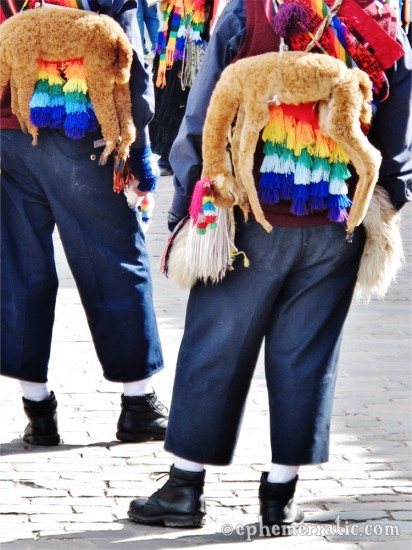
Stuffed llama dolls hang from Cápac Colla dancers
The women’s skirts are made with excessive amounts of thick fabric, gathered at the waist, a perfect design to flare up when the women spin, which they often do.
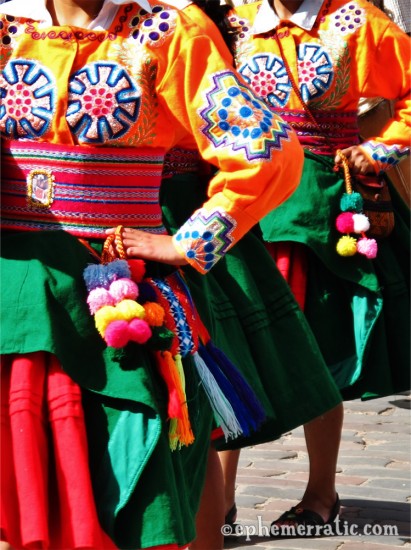
Costumes of women dancers in the Saint Joseph’s Day procession
And, the reason why this fiesta is happening at all is the star of the show: Saint Joseph. We watch bearers struggle to carry the statue of the Saint and his baby Jesus companion around Cusco’s Plaza de Armas.
The weight the young bearers endure on their shoulders seems, well, unbearable. They lean into the platform for stability, grimacing like a liberal watching FOX News. The platform is topped with the statues dressed in bedazzled outfits of thick, embroidered fabric (including baby Jesus’ feathered pimp hat); a strange collection of modern toys at the baby’s feet; and a whole mess’o flowers. Every so often, an older man comes over to make a course correction to keep the lot going in a straight line.
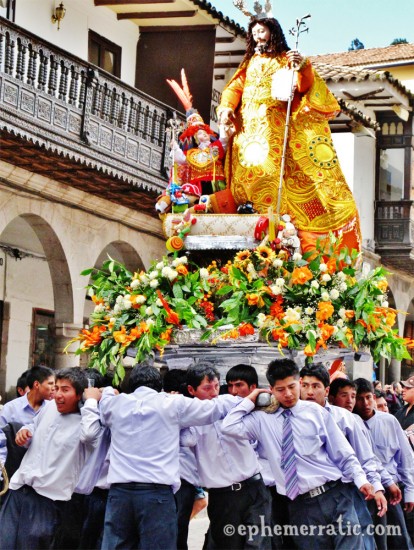
Bearers struggle with the heavy burden of the Saint Joseph statue
When the bearers can no longer carry the weight, they maneuver the platform onto a large table set up for this purpose. The young men rest a bit before taking it up again, taking the opportunity to wipe the sweat out of their eyes and retuck their disheveled shirts. After a few rounds, an older crew of men relieves them.
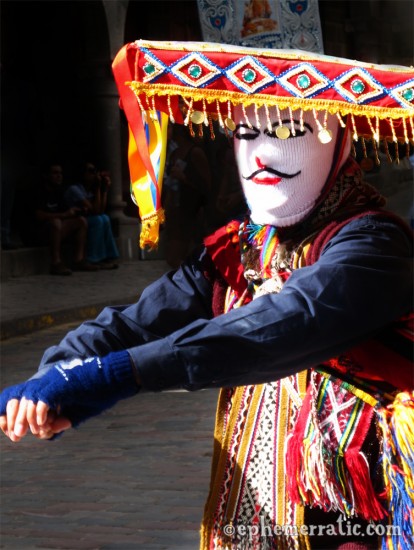
Traditional Cápac Colla dancer at the Saint Joseph’s Day procession
What with all the sweaty agony and break taking, the Saint Joseph’s Day parade progresses slowly. Although speed probably isn’t the point. At the root, the day is about bringing people together. There’s time to chat, time to people watch, time to appreciate what you find sublime — whether it’s god or your friend’s funky Cápac Colla dance moves — or time to realize that your camera battery is about to die.
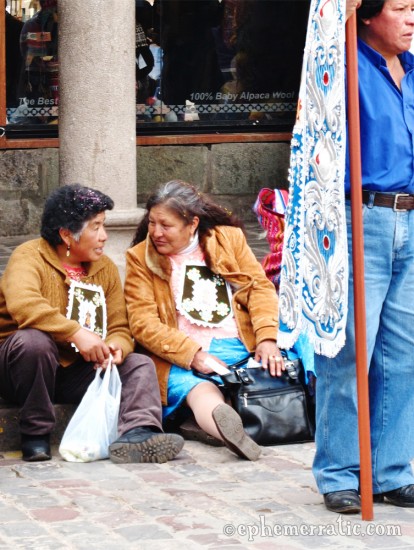
Women with confetti in their hair sitting for a chat

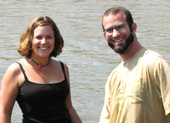
I love how Peruvian culture is so full of liveliness and bright colors. I can imagine how even at a slow deliberate ceremony like this celebration for St. Joseph everyone is still very upbeat and jovial. Those stuffed baby llamas are kind of creepy though! Did you enjoy the festival while you were there?
The festival was a really welcome surprise. Based on the festival calendars we’d found, we hadn’t expected to see any festivals in Cusco, so we lucked out — in the most colorful, interesting way.